March 4, 1982
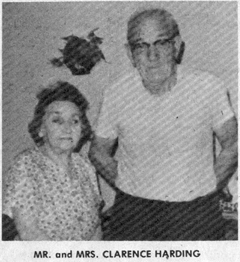
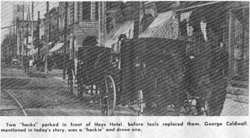
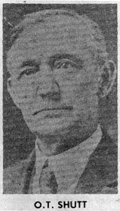
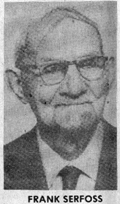
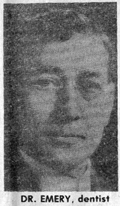
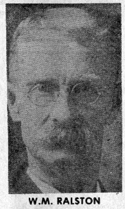
Picture #3 – O.T. Shutt
Picture #4 – Frank Serfoss
Picture #5 – Dr. Emery, dentist
Picture #6 – W.M. Ralston
There were a number of recollections your author wanted to tell in the East Center Street story, but there was not space. Here is some more.
Why shouldn’t I recall a lot about that area, since I helped The Daily Review move from the old Foster home to their new location on Center in 1923, and earlier I had carried the paper in that area and knew many residents.
At that time, Clayton Kinsey was in charge of the Review’s carrier boys and was also advertising manager. Art Winkler was mechanical superintendent, V.E. “Vic” Schuh was foreman of the composing room. News reporters and writers were Calir Crawford and Hal Stout. Ella McNally was society editor and publisher. Later, there was Ange Fletcher Cole as society editor and Virgil “Poody” Switzer as city editor.
GEORGE THE “HACKIE”
In doing research for the story, I came across the name of a man whom I had been trying to recall for several years, George Caldwell. He resided at 123 1/2 E. Center. George was a “hackie”, that is, he drove a “hack”, a horse-drawn carriage which was something like a stagecoach modernized a little.
George met all the passenger trains in Fostoria, of which there were many every day, since there were five railroads. Many of the passengers were traveling men and each generally had more than one big bag, often loaded with samples. They wanted to get to either a hotel, factory and business.
I can still see George, giving his spiel “Hack and baggage” as the passengers detrained. His driver’s seat was elevated in front, like the old stagecoaches.
PETERS LUNCHROOM
Remember Henry Peters lunchroon, which later was taken over by Clarence Harding? Since it was close the The Review, I often dropped in for a tall glass of draft rootbeer, good and cold, with a real rooty tang, not the overly sweet taste of most of today’s bottled variety. It was a good place to eat lunch or sandwiches too, beef, pork and breaded veal. As I recall, lunch was 25 or 30 cents.
Peters, a rotund jolly man, nicknamed me “the mayor of Oklahoma”. After Peters retired, the business was taken over by Mr. and Mrs. Clarence Harding, his son-in-law and daughter.
VAN VLERAH’S SALOON
I recall that I carried The Review to J.G., “Jim” Van Vlerah’s saloon at 113 E. Center before it was taken over by The Review. The saloon was downstairs, and he lived upstairs. He was a very tall, stately-looking man with gray hair. Jim always personally paid for the paper. If I couldn’t catch him in the saloon downstairs, the bartender would send me to his living quarters which today is The Review Times administration office and editorial department.
I still recall that his saloon was one of the quietest and most elegant saloons in which I had to collect for the paper. In the front, he had a large round table surrounded by overstuffed leather chairs, evidently reserved for businessmen who met for discussion over a drink.
REAL NICE PEOPLE
There were a lot of nice people living in that area and many of them were my Review customers. Here are just a few of them:
There were the O.T. shutts, living at 150 E. Center. Later, Hatie Drenner, my wife’s grandmother lived there. Shutt was an agent for the Lake Erie & Western railroad, the office and station being where Camp Fire headquarters is now. He was one of my Sunday school teachers at the Presbyterian Church. The Shutt’s always gave me a Christmas gift when I delivered papers, one of them being a book which I still have.
O.T. Shutt’s brother, Jim, lived at 203 E. Center, where the Robert Hanley family live today. Shutt and his daughter Crickett operated the Fair Store at 113 S. Main St., where Flower and Gift Shop is now.
A.C. “Tony” Dumont who lived in the brick house at Center and Poplar streets (it is still there), was proprietor of the saloon where Medina’s Bar is now. I carried The Review to his house, surrounded by an iron fence but often collected at the saloon.
There wasn’t space to include the photo of Frank Serfoss in the East Center story, so it is included with others today. He had the machine shop across from The Review. My family knew all the Serfoss family. My sister, Ruth and Virginia were friends of their daughters, Mildred and Helen. We lived just around the corner from Poplar on North.
Mrs. Henry (Helen Serfoss) Gary has kept many of her father’s old business paper transactions and here are a few interesting items from the collection:
Central Union Telephone Co. (service one month) $1.50; Logan Natural Gas & Fuel co. (5,000 cubic feet gas) $1.50; Standard Light Power Co. (one month’s service) $1.71; rent for building (to Emerine and Henry) $15; Fostoria Water Works (one month) $1.50; G.B. Will & Co. Hard and Soft Coal, 124 S. Main St. (500 pounds chestnut coal) $1.75.
The good old days.
SISTER CHARLES…OTHERS
In that same neighborhood there lived many other fine families: the Eisslers, Wades, Goods, Ralstons, Neiderhousers, Mergenthalers, Mohlers (the tailor), Dr. Emery, Wards others.
Mildred Mohler, now Sister Charles, still resides in Toledo. I remember her, but haven’t seen her since she became a nun.
The Ralstons were our next door neighbors. Mr. W.M. Ralston worked at the Hocking Valley Railroad Depot, and was Fostoria’s socialist mayor in 1912-13. During his term, those arrested for local offenses were given jail terms and a menu of bread and water. Their son, Byron, became a U.S. Naval officer and a lawyer in New York after he retired. Ruth Ralston Leonard just died recently in the southwest, where she had resided for many years.
Mrs. W.W. (Amanda) Sayre, who had the millinery store on the second floor of the building where The City Loan is now, lived at 235 E. Center. The Howard Smith family live there now.
RUTH BARNES WRITES
Ruth (Dennis) Barnes upon reading the East Center story wrote some of the recollections she has when as a girl lived with her family at 309 E. Center, close to the railroad tracks.
“I remember when I was about 10 years old, there was a young man who went from house to house to take family pictures usually outdoors. His name was Schell. He had a tripod and a very big camera. He took our family picture on the front porch steps that summer day”.
“I remember the man who came around every night to light the (gas) street lights. Catherine and I were allowed to wait on the front steps to see him go along the street. After he passed our home my mother would call us into the house, it was bedtime”.
“Previous to the restaurants you listed as Peters and later the Harding (123 E. Center), I remember the Huss Restaurant. Why? My father had a large oval metal lunch pail he used to carry his dinner when he was employed at the Harter Mill (now Mennel). Now and then, only on Saturday evenings, our parents would let us walk to Huss’s place where they would fill this pail to the brim with the best vegetable soup with lots of beef for the grand sum of 25 cents. Although my mother was a very good cook, I suppose this was a treat for her”.
“I remember playing on top of the boxcars that had been put on the siding at the freight office to be unloaded. As you remember, our playmates were all boys, Joy Huss, Wilbur Huth, Paul Morris and Adolph Kinn. All of us would climb to the top and race along jumping from one car to the next. When my father learned about that, the results? We learned to drape ourselves over his knee and he applied the punishment with his hand in the proper place”.
“I remember living next to Mr. and Mrs. Huth. You see we were living in reflected glory, since Mr. Huth drove the horses for the Fostoria Fire Department”.
“Just one more rememberance…at 309 E. Center, I had my first date with a young man named Harry Barnes. Eventually that date lead to a marriage of almost 50 years before he died in 1972”.
GRAY PRINTING AND MILL
While I’m talking about that part of town, I should tell my recollections about two places of business at East North and Cadwallader, The Gray Printing Co. and Eureks Planning Mill.
Our residence was close to both of them.
I would often go to the Gray plant to dig into the refuse box of discarded printed sheets, many of which showed ladies style of that day, printed in multiple colors, or industrial catalogue pages likewise in color, and printed from engravings, often wood made in the Gray shop by Howard Sauders. The later information, of course, was learned years later.
The Eureka Planning Mill had a refuse pile of a variety of wood, long thin strips suitable for kite frames and an assortment of other pieces which boys my age always found useful for something.
Since those days, Gray Printing has expanded and taken in most of the houses adjacent to the original plant, including where Mayor Ralston lived as well as our old home.
The only part of the old mill left is the office area, which is now a Gray photographic area. The rest of the buildings were demolished and the area now contains new structures for the expanded facilities.
GASOLINE 19 CENTS GALLON
Joe Vargas, 819 Spruce St., a regular reader of Potluck, stopped at my house to show me an old book which he discovered in a room partition when he was doing remodeling at his house.
The book was a Fostoria Public School grammar book, used by a student who never turned it in. It carried a date of 1916. How the book got in the partition no one will ever know.
With the book was a statement issued to Dell Dixon by Demmel’s Tire Shop, 119 E. Center St., for purchases. According to the statement gasoline was 19 cents per gallon, oil was 25 cents per quart and alcohol was $1 per gallon.
Demmel’s was named in the East Center Street story.
According to Vargas, he emigrated from Mexico to Colorado in 1920, came to Fostoria in 1928 and worked all that time until retirement at the Fostoria Foundry.